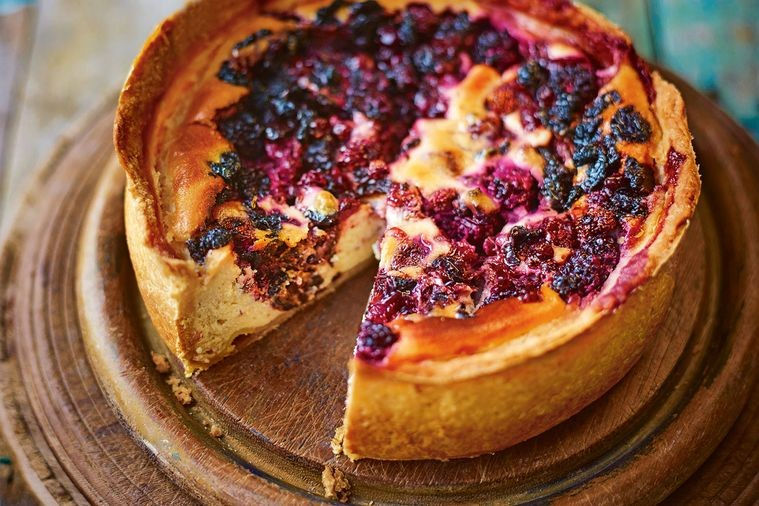TRADITIONAL NEENISH TARTS
- Arron O'Halloran

- Apr 30, 2018
- 3 min read
NEENISH TARTS ARE A SMALL PASTRY TART, LAYERS OF JAM AND MOCK CREAM FILLING AND TOPPED WITH TWO-TONE ICING. ONE OF THE MOST WONDERFUL TRADITIONAL AUSTRALIAN DESSERTS FOUND AT BAKERIES EVERYWHERE.

SO WHAT ARE NEENISH TARTS?
They are delicious is what they are.
Crispy, buttery pastry base
A layer of strawberry or raspberry jam
A layer of mock cream
All topped with two tone icing
Neenish Tarts are a small pastry tart, layers of jam and mock cream filling and topped with two-tone icing. One of the most wonderful traditional Australian desserts found at bakeries everywhere.
Make sure to start these a few hours before you want to serve - there is a total of up to 1 hour waiting time for parts to cool.
Servings: 12 tarts
Author: Marie
Ingredients
For the pastry
1 cup (130g) plain flour
80 g unsalted butter, cubed and cold
2 tablespoons granulated sugar
Pinch of salt
1 egg yolk
1 ½ tablespoons cold water
½ cup strawberry jam
For the Mock Cream
1 tablespoon boiling water
½ teaspoon gelatine powder
2 tablespoons milk
¼ cup caster sugar
115 g unsalted butter, softened
1 teaspoon vanilla extract
For the icing
1 cup icing (powdered / confectioners) sugar
3 teaspoons milk
2 teaspoons dutch cocoa
Pink food colouring (optional)
Instructions
To make the pastry:
Place the flour, butter, sugar and salt in a food processor and pulse until it looks like wet sand. Add the egg yolk and pulse until mixed through. Finally add the ice water ½ tablespoon at a time and pulse between each until the dough just starts clumping together.
Turn the dough out onto a lightly flour surface and knead just until smooth (not for too long). Press into a disk, wrap in plastic wrap and refrigerate for at least half an hour.
Preheat the oven to 200C / 400F / 180C fan forced. Grease and lightly flour a 12 hole muffin tin (notes)
Roll the dough out to about 2mm thick and use a large round cookie cutter (approx. 8.5-9cm), to cut rounds of pastry. Gently drop them down into each hole of the muffin tin, making sure they’re level. The pastry should come about 2cm up the side of the holes. Return to fridge for 15 minutes.
Prick the base of each pastry case with a fork and bake for around 10-12 minutes until starting to turn golden. Then transfer to a cooling rack until completely cooled.
Spread about 1.5 teaspoons of jam over the base of each tart case.
To make the mock cream
Tip the boiling water into a small dish and sprinkle the gelatine over the top. Mix with a fork, then allow to sit for 5 minutes.
Add the sugar and milk to a small saucepan and heat over very low heat until the sugar has dissolved. Give the gelatine another stir, then pour it into the hot milk and stir until completely dissolved.
Let the milk mixture cool to room temperature before continuing
Beat the butter and vanilla until light and creamy. Slowly pour in the milk mixture while constantly beating.
Spread the mock cream over the tarts and use a spatula to make the top level.
For the icing
Mix the sifted icing sugar and the milk together until you have a smooth spreadable consistency (see notes).
Transfer half to a separate bowl and add the cocoa, mix well.
In the other half add just a small amount of pink food colouring (optional) and mix.
Use a small spatula to spread the pink icing over half of each tart then allow them to set a little at room temperature for about 10-15 minutes.
Repeat with the chocolate icing.
Serve.
Recipe Notes
I use a standard Australian 20ml tablespoon (4 teaspoons worldwide)
I like to grease and flour my tin just to be on the safe side, so that the cooked pastry cases turn out easily.
You don’t want the icing too runny, so it drips down the sides of the tarts. A great way to test the consistency is to give it a mix around then let it sit and it should take about 7-8 seconds to totally smooth out again.








Comments